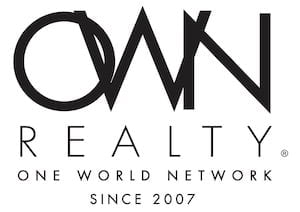1031 Exchange in Washington
- Home
- 1031 Exchange in Washington
Considering A Tax Deferred 1031 Exchange in Washington? We are here to help!
In the realm of real estate investment strategies, the 1031 exchange stands out as a powerful tool, especially for property owners and investors in Washington. This tax-deferred exchange allows individuals to sell a qualified property and subsequently acquire another within a specific timeframe, all while deferring capital gains taxes.
Unlike conventional sales, the 1031 exchange treats the transaction as an exchange, offering taxpayers the valuable advantage of deferred gain treatment. This strategic move falls under US CODE: Title 26, §1031, emphasizing the exchange of property held for productive use or investment.
The allure of a 1031 exchange in Washington extends beyond mere tax deferment; it encapsulates a strategic approach for investors seeking to optimize their real estate portfolios. As the dynamics of the market evolve, investors must stay attuned to the ever-changing landscape.
The flexibility inherent in a 1031 exchange allows investors to adapt to market shifts and capitalize on emerging opportunities. In the realm of Washington real estate, the decision to embark on a 1031 exchange transcends the realm of taxation; it’s a pivotal move in the chess game of property investment.
As the landscape of the Pacific Northwest evolves, investors in Washington are presented with a myriad of opportunities and challenges. The 1031 exchange becomes a strategic instrument in navigating this ever-shifting terrain, allowing investors to recalibrate their portfolios in response to market dynamics.

Understanding the nuances of a 1031 exchange is crucial for those navigating the real estate market in Washington. The process aligns with the IRS guidelines outlined in Section 1031 of the Internal Revenue Code, with further insights provided by the Like-Kind Exchange Regulations from the US Department of the Treasury.
These regulations not only serve as a guide to the law but also encapsulate the IRS’s interpretation of Section 1031. In the intricate dance of real estate transactions, Washington’s investors can leverage the 1031 exchange to pivot seamlessly between properties, keeping their capital working for them.
The symbiotic relationship between the tax code in Section 1031 and the IRS’s interpretation, as encapsulated in the Like-Kind Exchange Regulations, provides a stable foundation for investors navigating the complexities of property transactions.
Washington’s unique real estate market, characterized by diverse urban and rural landscapes, demands a nuanced approach. A 1031 exchange, with its emphasis on “like-kind” properties, provides investors the flexibility to transition seamlessly between different facets of the market.
Whether it’s navigating the thriving urban centers or exploring the untapped potential in rural landscapes, the 1031 exchange serves as a compass, guiding investors toward opportunities aligned with their investment goals.
Why Consider a 1031 Exchange in Washington?
Delving into the specific significance of a 1031 exchange in Washington, property owners and investors can leverage this strategy to postpone capital gains taxes effectively. The tax code embedded in Section 1031 of the Internal Revenue Code serves as the compass for successful exchanges.
Understanding the IRS interpretation, along with adhering to widely accepted standards and regulations from the US Department of the Treasury, is essential for a seamless 1031 exchange journey.
Beyond the financial benefits, a 1031 exchange in Washington reflects a forward-thinking investment strategy. By aligning with the IRS’s recognition of “like-kind” properties, investors can diversify their holdings strategically. This approach not only safeguards against potential market fluctuations but positions investors to capitalize on emerging trends and opportunities unique to the Washington real estate landscape.
For property owners and investors in Washington, the significance of a 1031 exchange lies not only in its ability to defer taxes but in its role as a dynamic tool for wealth preservation and growth. The nuanced interplay between federal and state tax rates underscores the need for a well-informed approach, and the 1031 exchange provides investors with the framework to navigate this terrain effectively.
Moreover, the significance of a 1031 exchange in Washington is underscored by the state’s economic vibrancy and growth. The ability to defer capital gains taxes becomes not just a financial advantage but a strategic lever for investors looking to align their real estate holdings with the pulse of Washington’s economic trajectory.
The state’s commitment to innovation, sustainability, and diverse industries creates a rich tapestry of investment possibilities that savvy investors can harness through the strategic lens of a 1031 exchange.

The Significance of a 1031 Exchange:
For any property owner or real estate investor eyeing the vibrant market of Washington, the consideration of a 1031 exchange becomes paramount when anticipating the acquisition of a replacement “like-kind” property post the sale of an existing investment property. Neglecting this strategy could lead to a capital gains tax payment, currently at 15% but potentially rising to 20% in the future.
As investors navigate the intricate web of federal and state tax rates during a 1031 exchange execution, the primary rationale emerges: the IRS’s depreciation of capital real estate investments at a rate of 3% per year. This depreciation continues for as long as the investment is held, only ceasing when it is fully depreciated.
When selling the capital asset, the IRS seeks to tax the owner on the depreciated portion as income tax, determined by the marginal tax rate. For instance, if an investment has been held for 15 years and the IRS has depreciated it by 45%, taxes would be levied on that 45% depreciation.
If the combined state and federal taxes amount to 35% at the marginal rate, this translates to approximately 15% of the property’s cost (one-third of the 45%). In the case of a fully depreciated property, the entire 35% marginal tax rate applies.
A simplified perspective is that without the benefit of a 1031 exchange, purchasing power is diminished, representing only 70-80% of its previous value after accounting for the exchange and tax payment.
Embracing a 1031 exchange in Washington not only aligns with tax regulations but serves as a strategic approach for investors aiming to maximize their real estate portfolio’s potential. A 1031 exchange in Washington is more than a transaction; it is a strategic maneuver that aligns with the ever-evolving nature of the real estate market.
As investors navigate the intricate dance of buying and selling, the 1031 exchange stands as a reliable partner, offering not just tax benefits but a pathway to sustained growth and resilience in the face of market dynamics.
As investors navigate the intricate web of transactions in Washington, the 1031 exchange emerges as a catalyst for long-term wealth preservation. By strategically reinvesting capital into properties that align with the state’s economic drivers, investors position themselves not just for immediate tax benefits but for sustained growth and resilience in the face of an ever-evolving real estate landscape.
In essence, the decision to pursue a 1031 exchange in Washington is a declaration of strategic intent. It’s a recognition that real estate investment goes beyond bricks and mortar—it’s an artful dance with the market, a dynamic journey where the 1031 exchange serves as both guide and guardian of an investor’s vision for long-term prosperity.
Discover Your Path to Wealth Preservation
Power of 1031 Exchanges
Are you ready to embark on a financial journey that could reshape your real estate investments? Look no further! At Sapphire Investment Solutions, we specialize in turning the complex world of 1031 exchanges into a streamlined, wealth-building opportunity.


 Call us today:
Call us today: